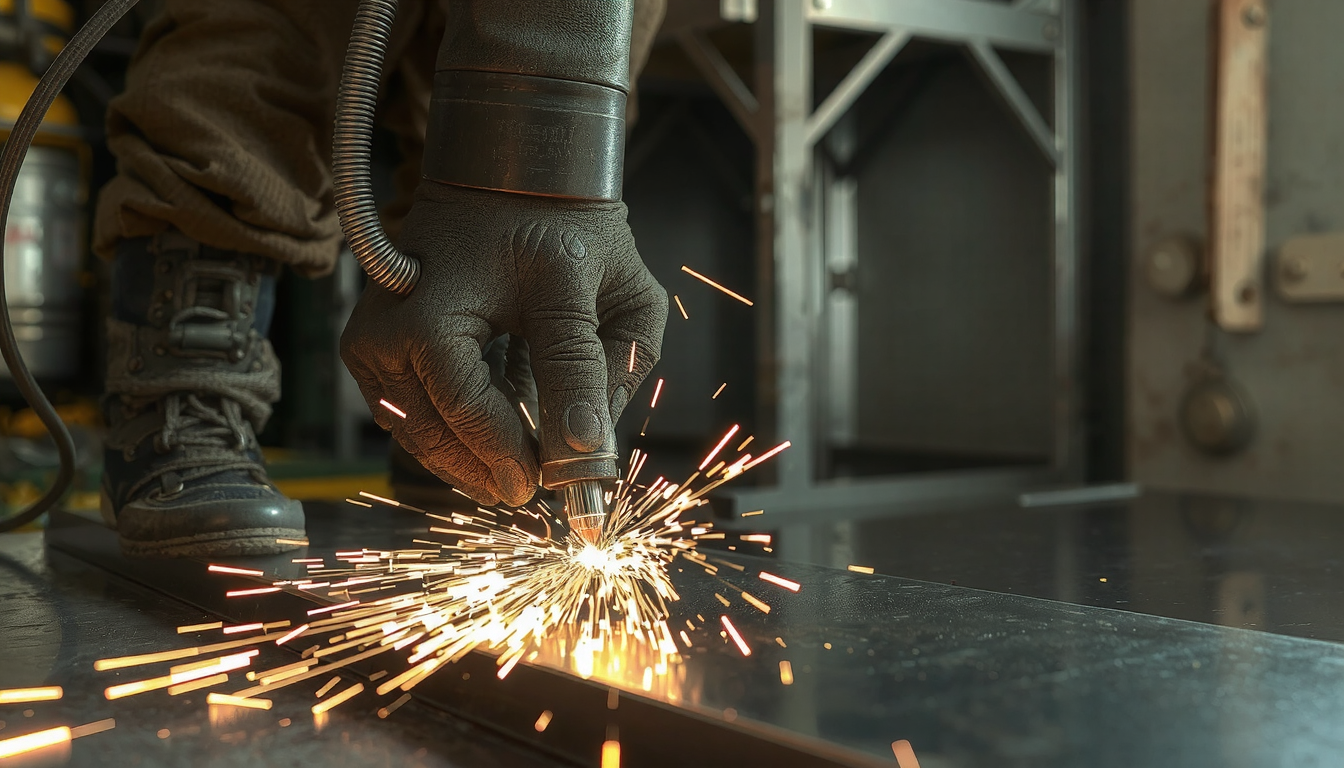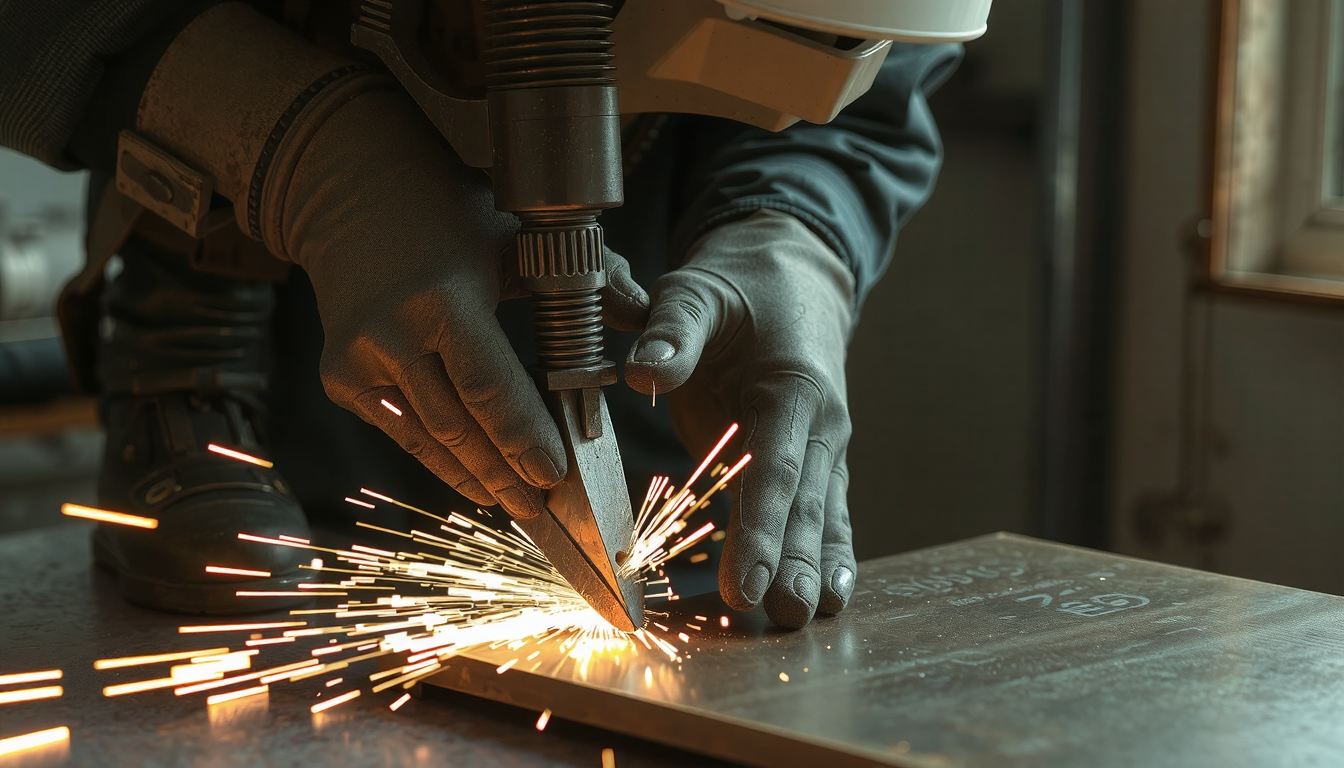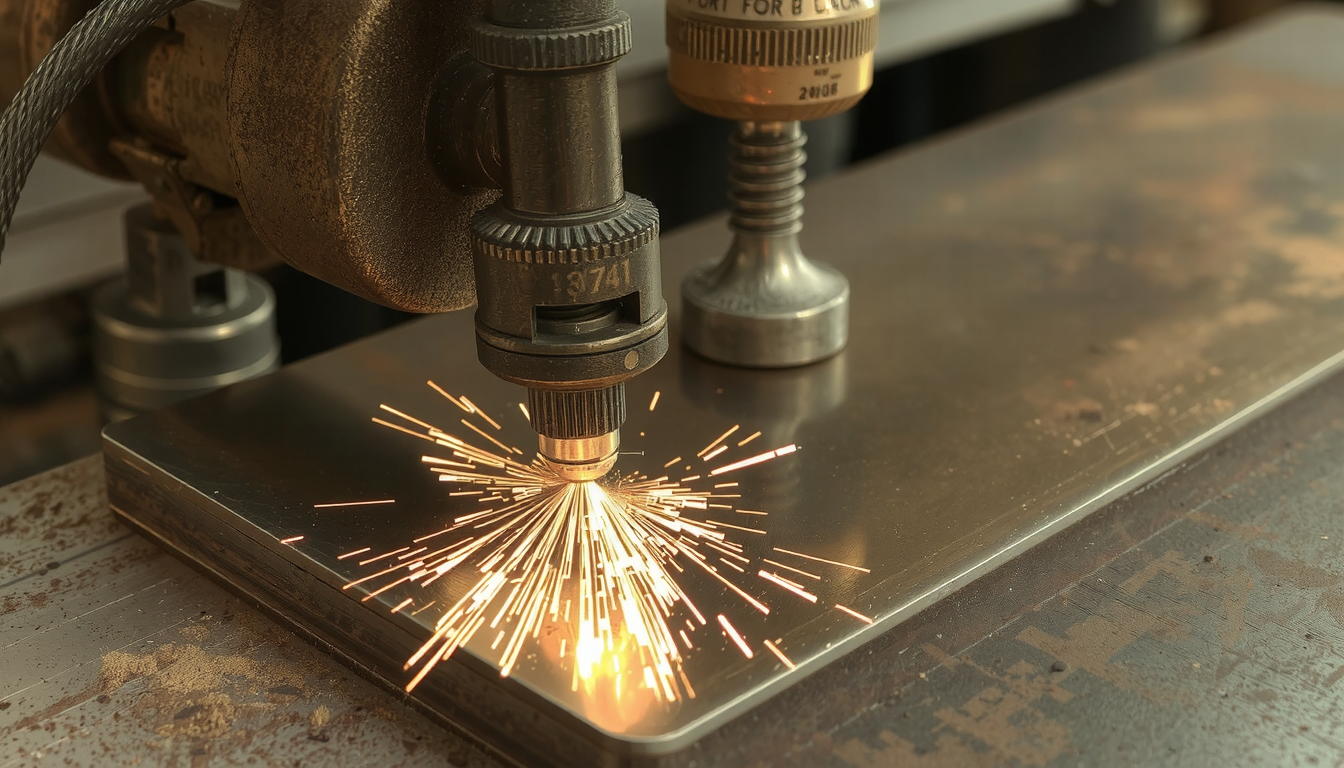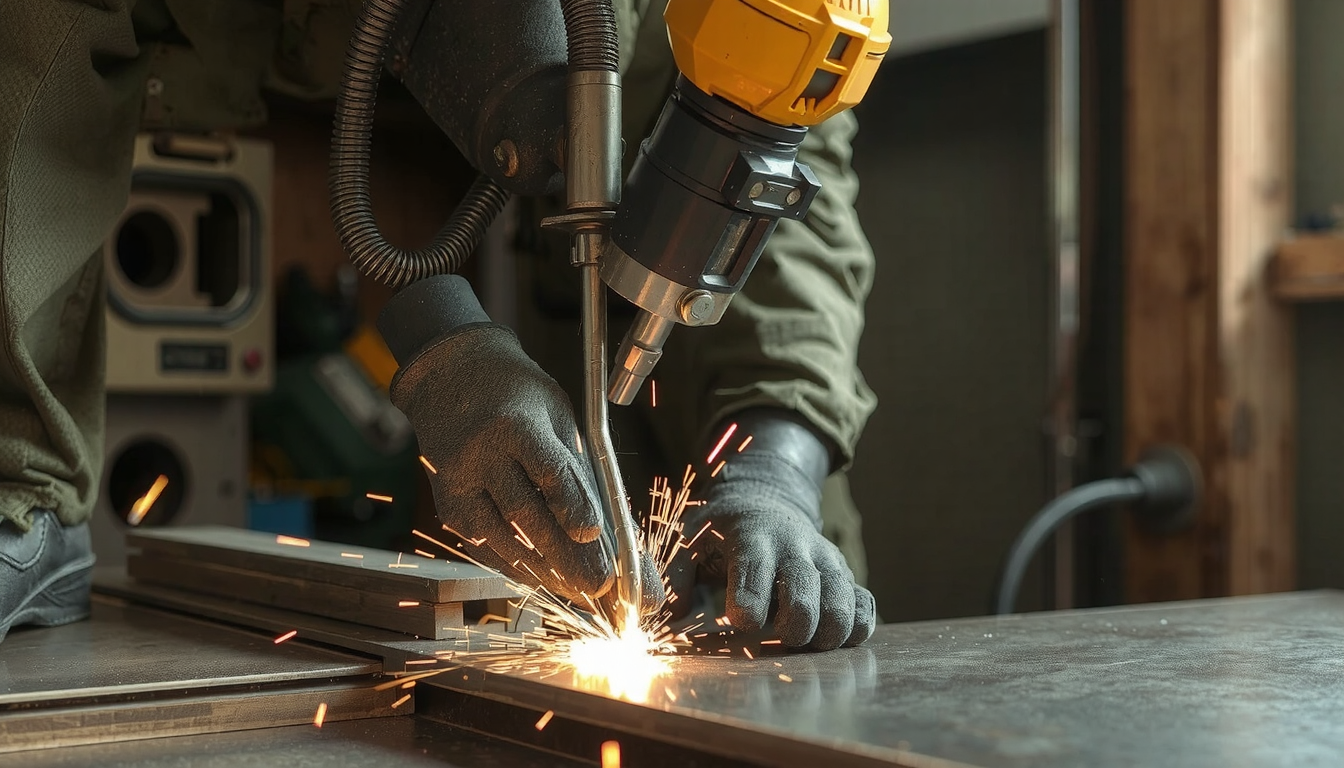By virtue of learning the process of how to cut brass sheet metal, you can tap into many fresh ideas. This job is well within the grasp of DIYers and artists, provided they have suitable instruments. The main factors that influence your achievement are just a few. First off, you need to determine the brass’s thickness. This is referred to as its gauge. Another essential thing you need to think about is the type of cut you want. Is it going to be a straight line or a curve? Lastly, the tool selection needs to be made correctly. As experts in metal, we at have come up with this guide. It will show you each step you need to implement for a clean and precise cut.

Safety Comes First: The Unwavering Non-Negotiable of Cutting Brass
Before you make any cut, you should always prioritize safety. These are not optional; they are must-dos as they guarantee protection from injury. Brass might appear soft, but a new cut edge is really quite sharp. It can even act like a razor. I once learned the lesson the hard way that even the simple act of handling a sheet before cutting it may lead to a bad cut. That being said, gloves are essential from the beginning to the end.
-
Personal Protective Equipment (PPE)
- Safety Goggles: Always wear them. They offer eye protection from small flying metal particles.
- Work Gloves: Use strong, well-fitting gloves. They provide protection against sharp edges.
- Long Sleeves: A long-sleeved shirt is a good way to protect your arms from getting scratched.
- Dust Mask: Wear a mask when using electric power tools. They can generate fine metal dust that you ought not to breathe in.
-
Work Area Preparation
- Work in a space with good airflow.
- Use a steady and solid workbench.
- Always clamp your brass sheet down. A secured piece of work will not slip while you cut.
Choosing Your Cutting Method: The Right Tool for the Job
The best tool for cutting brass sheet metal will largely depend on two aspects. First, it is the thickness of the material. Second, it is the shape of the cut. Thin sheet material requires a different instrument than a thick one. Cutting a straight line is easier than cutting a complicated curve. To assist you in your choice, you can check a complete guide about metal cutting tools for general metalworking purposes. For your brass project, the table below outlines the most common methods for comparison.
| Tool | Best For (Thickness/Gauge) | Cut Type | Pros | Cons |
|---|---|---|---|---|
| Tin Snips / Aviation Shears | Very Thin (24 gauge / 0.5mm or less) | Straight & Gentle Curves | Low-cost, simple, no-power use. | Can bend or warp edges, not for thick brass. |
| Jeweler’s Saw / Hacksaw | Thin to Medium (up to 16 gauge / 1.5mm) | Intricate Curves & Straight | Extreme precision, clean cuts, great for details. | Slow, needs patience, blades can break easily. |
| Rotary Tool (e.g., Dremel) | Thin to Medium (up to 18 gauge / 1.0mm) | Straight, Curves, Cutouts | Multifunctionality, speed for small jobs, good for odd shapes. | Generates heat, can be loud, requires a steady hand. |
| Jigsaw / Scroll Saw | Thin to Thick (up to 12 gauge / 2.0mm) | Complex Curves & Straight | High performance, much quicker than a hand saw for curves. | Needs a special metal-cutting blade, can vibrate a lot. |
| Bench Shear | Thin to Thick (up to 16 gauge / 1.5mm) | Straight | Extremely fast, clean, and perfectly straight cuts. | Bulky and pricey, can only do straight cuts. |
The 5-Step Process for a Perfect Cut
Regardless of which tool you decide to use, adhering to a consistent process is key. This five-step method will ensure that you make accurate, clean cuts on your brass sheet.

Step 1: Measure and Mark Your Line
Precision starts here. Use a very fine-tipped permanent marker to trace your cut line. For the most exact mark, utilize a metal scribe. It slightly scratches a thin, clean line into the surface.
Use a steel ruler or a machinist’s square to guide your straight lines. If possible, mark on the side of the brass that will not be exposed in your final project. This helps you avoid any surface mark or scuff on the finished face.
Step 2: Secure the Brass Sheet
This step is paramount. Never try to cut a loose sheet of metal. An unsecured metal sheet can vibrate and move around, causing ragged, ugly cuts. It could also harm the saw blades.
The best approach to hold the sheet is to clamp it firmly to your workbench. For thin sheets, here is an excellent pro-tip: Sandwich the brass between two pieces of scrap plywood or hardboard before clamping. This will stop the metal from bending and vibrating. This method is indeed the key for beginners in DIY and assures a much neater cut.
Step 3: Make the Cut
Now you are all set to start to cut the brass sheet. The fundamental rule is that the tool should do the work. Do not try to force it. Exerting too much force will cause the metal to bend or break your tool.
Move at a slow and steady pace. If you are using any kind of saw, apply a small amount of cutting oil. A few drops of 3-in-1 oil or a similar product will decrease friction and heat. This will make cutting smoother and prolong the life of your blade.
Step 4: Deburr and Smooth the Edges

After cutting, the edge of the brass will be sharp and rough. These uneven parts are known as “burrs.” You have to remove them to make the edge safe to handle, and it also makes it look more professional.
Start with a flat metal file. Hold it at a 45-degree angle to the edge. Gently push it along the cut line. This should take down the biggest burrs. Then, switch to sandpaper to achieve perfect smoothness. Begin with a 220-grit paper and finish up with a 400-grit paper for a smooth, safe edge.
Step 5: Clean and Inspect
Your work is near completion. Use a clean cloth to wipe away any cutting oil, fingerprints, and metal dust from the surface.
Finally, carefully check your cut. Check the precision against your original marks. Glide a gloved finger along the edge to verify it is smooth. Confirm there are no sharp points left on it. Now the piece is ready to be used in your project.
Troubleshooting Common Issues When Cutting Brass Sheet Metal
Even with careful preparation, you might run into problems. Here are solutions to the most common issues that arise when learning how to cut brass sheet metal.
Problem: The Edges Are Jagged or Bent
More often than not, this problem is caused by a dull tool. It can also happen if you cut too quickly or the sheet isn’t held down tightly. If your snips are bending the metal, they may need sharpening. If your saw cut is jagged, your blade is likely dull.
To fix this, first replace your blade or sharpen your snips. Reduce your cutting speed and concentrate on a steady motion. Most importantly, make sure your brass sheet is securely clamped. Use the plywood sandwich method described earlier to stop the metal from flexing and creating a rough edge.

Problem: The Saw Blade Keeps Binding or Breaking
If your saw blade gets stuck or snaps, you are likely pushing too hard. It could also be that you are using the wrong blade type. Heat buildup can also cause the metal to grab the blade.
The solution is to apply very light pressure. Let the blade’s teeth do the cutting. Verify that you are using a blade that is specifically made for metal with a high tooth count. For thin brass, hobbyists often suggest using blades with a high TPI for thin metals. Look for a blade with 24 TPI (Teeth Per Inch) or more. Always use a cutting fluid to keep the blade cool and lubricated.
Problem: The Brass Discolors from Heat
When using a power tool like a Dremel or jigsaw, you may see a blue or brown discoloration along the cut line. This is caused by heat from friction.
To prevent this, reduce the speed setting on your tool. Work in short bursts of a few seconds at a time, giving the metal a moment to cool off. A drop of cutting fluid will also help carry heat away from the cut, which leads to a cleaner look.
Beyond DIY: Industrial and High-Precision Methods
For hobbyists, hand and basic power tools are perfect. Nevertheless, advanced machines are used by professionals for more complex or larger jobs. Knowing these methods is useful if your project requires a level of precision that is unattainable at home.
- Guillotine Shearing: This machine uses a large blade to make perfectly straight cuts in high volumes. It is very fast and efficient.
- Laser Cutting: A high-powered laser melts or vaporizes the metal. This allows for extremely intricate and complex designs with smooth edges.
- Waterjet Cutting: A high-pressure stream of water mixed with an abrasive material cuts the metal. This method produces no heat, so it does not change the metal’s properties.
These methods are core to professional sheet metal fabrication and are often performed using specialized equipment. For projects that need the utmost precision, services like China CNC machining services offer capabilities far beyond home setups.
Frequently Asked Questions (FAQ)
What is the easiest way to cut thin brass sheet (under 24 gauge)?
For straight cuts on thin brass, a good pair of straight-cut tin snips (also called aviation shears) is the easiest and fastest method. For simple curves, offset snips work best. These tools are easy to use as they don’t require power or a complex setup.
Can I use woodworking tools to cut brass sheet metal?
Yes, some woodworking tools can be used if they are fitted with the right blade. A bandsaw or a scroll saw installed with a fine-toothed metal-cutting blade is very effective for complex curves. You should always run the saw at its slowest speed. Never use a standard wood blade, as this will destroy the blade and make an unsafe cut.
How do I cut a circle or disk out of a brass sheet?
To make smaller, precise circles, a jeweler’s saw gives you the most control. For bigger circles, a jigsaw or scroll saw with a metal-cutting blade works well. You can also use a hole saw in a drill at a very slow speed with lubricant, but this method works best on thinner sheets and can be hard to control.
Do I need to use a lubricant when cutting brass?
Using a cutting fluid or light oil is highly recommended when using any saw or rotary tool. It is not needed for hand snips. Lubricant reduces heat and stops the blade from getting stuck. In turn, it prolongs the life of the blade and helps you achieve a cleaner cut.
What’s the thickest brass sheet I can cut by hand?
This depends on your tool and hand strength. With heavy-duty compound aviation snips, you can usually cut brass up to about 18 gauge, which is roughly 1mm thick. For anything thicker, it is much safer and more effective to use a power tool, like a jigsaw or a bench-mounted shear, to ensure a clean cut.

